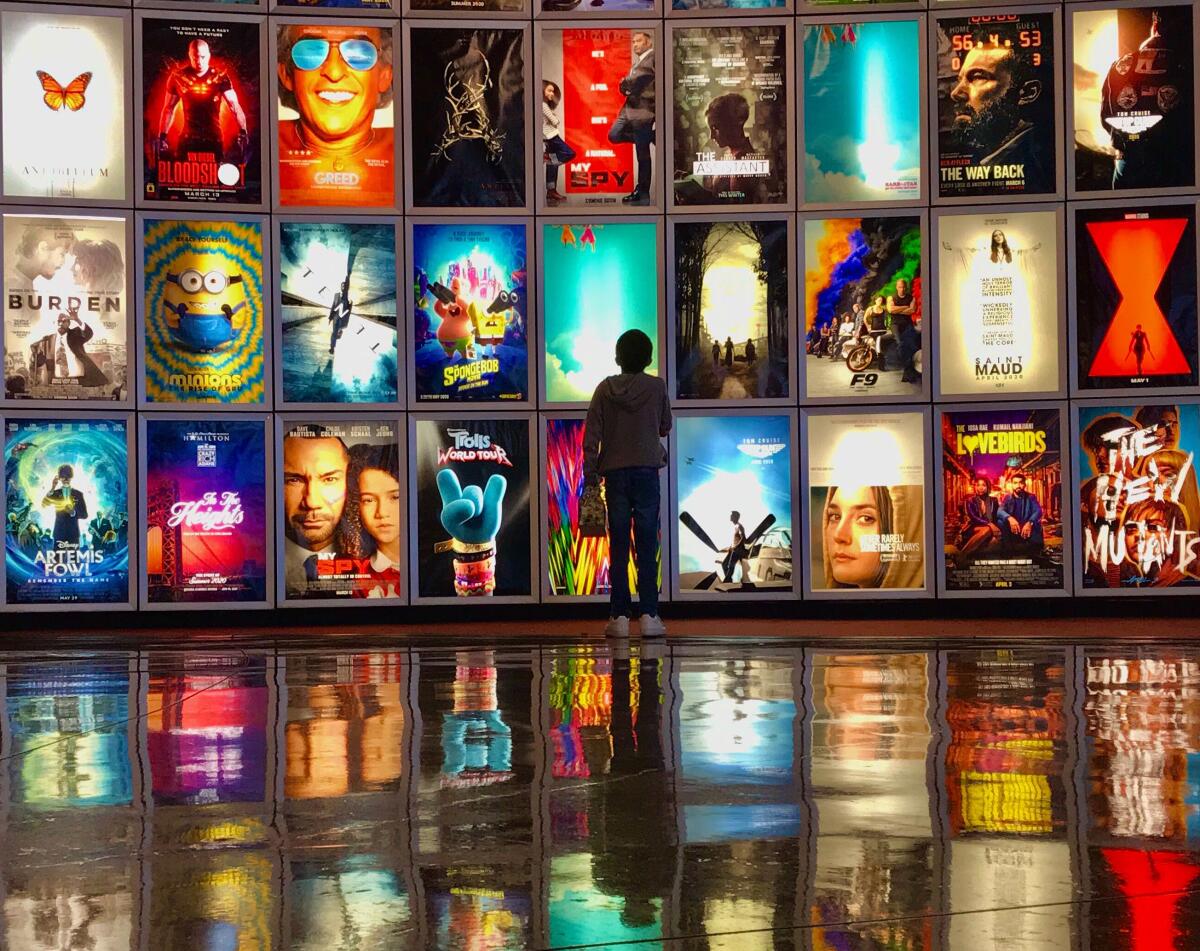Movie theaters are closing to avoid spreading coronavirus. Itâs a crushing decision â and the right one

Do you remember the Checkpoint Charlie scene in âBridge of Spiesâ? I do, sort of. Toward the end of Steven Spielbergâs very fine 2015 drama, Mark Rylance, playing a Soviet spy, is about to cross that famous bridge to freedom as part of a negotiation orchestrated by his American friend (Tom Hanks). Itâs a chilly night and a tense moment: Rylance takes one step forward, then another. And then all of a sudden, the guy a few seats down â the one who wandered in midscreening and stumbled into the theater reeking of alcohol â pitches forward in his seat and throws up on the floor in front of him.
Your experience of âBridge of Spiesâ was, I hope, better than mine. And mine, to be sure, could have been worse: I donât recall Upchuck Charlie spraying anyone with vomit, though I admittedly didnât stick around to investigate. I have since flashed back to that moment on occasion, usually in eye-rolling response to anyone droning on about the much-vaunted purity of the theatrical moviegoing experience. But Iâve thought about it a lot more these fraught past few weeks, often with an odd twinge of nostalgia â a sense of yearning for a time when public retching counted as a major disruption at the movies.
If that sounds facetious, bear with me. Iâve never harbored any exalted purist sentiments about going to the movies, but it is an experience I hold dear nonetheless. It is also one of those ordinary everyday activities, like attending sporting events, eating out at restaurants and going to work or class, that have joined that long list of temporary casualties called life as we once knew it. As the U.S. slowly rouses itself to action in the face of the global coronavirus pandemic, movie theaters have closed nationwide, from major chains like AMC Theatres and Regal Cinemas to art-house exhibitors like Los Angelesâ Laemmle Theatres. And no matter how optimistic the projections, it seems clear that they will remain closed indefinitely.
The latest updates from our reporters in California and around the world
Itâs a crushing decision â and also, unquestionably, the right one. Everything my Times colleague Charles McNulty said in his excellent recent piece on the necessity of closing live performance venues (âthe show must go on even if it kills usâ?) applies no less urgently to movie theaters, and indeed to every other facet of public life. We are entering an extraordinary moment of collective action, a social experiment that is also a remarkable feat of social solidarity. If these are sacrifices, they are sacrifices that we must all be willing to make.
It hasnât been easy for everyone to embrace our new normal. Before they decided to close all locations nationwide, many theater chains, including AMC, had gone only so far as to reduce seating capacity to 50%, a Band-Aid solution. The Cannes Film Festival, which at this writing has set an April 15 deadline to determine whether or not it will proceed in May, clings stubbornly to optimism even though almost every other festival originally scheduled for the next few months has shuttered. Surely more drastic, conscientious action is required when the very air we breathe â the air we share with our fellow moviegoers â is no longer safe.
But elsewhere, major players throughout the industry have taken notice and acted accordingly. Film and television production is shutting down across the board due to safety concerns. Upcoming major-studio titles have been yanked from their spring 2020 release dates and presumably will be released later this year, among them the Marvel superhero caper âBlack Widow,â the James Bond adventure âNo Time to Dieâ and the live-action remake of âMulan.â As it happens, I attended the âMulanâ world premiere in Hollywood in early March, held days before Disney announced its decision to delay the filmâs release. Like so much else, it seems to have taken place an eternity ago â back when the idea of gathering several hundred people in the same space seemed merely a mild risk rather than a grievously short-sighted one.
Some studios have responded even more boldly. On Monday, Universal Pictures announced that it would effectively eliminate the usual theatrical window for several of its 2020 movies, and would make pictures like âThe Invisible Manâ and âThe Huntâ â both of which had their theatrical runs cut short â immediately available for home streaming. Meanwhile, independent movies and movies imported from overseas are having to face their own tough decisions with regard to release strategy and timing. (I do hope that many of you will catch up with Eliza Hittmanâs superb âNever Rarely Sometimes Always,â which had the misfortune to open in theaters March 13, just as the calls for social distancing were starting to take widespread effect.)
From apocalyptic despair to restorative joy, here are just a few titles for your at-home viewing marathon chosen by film critic Justin Chang.
Future films will find it that much harder to generate media attention, enter the market and find their audiences, after the recent cancellations and postponements of major industry launchpads like the South by Southwest Film Festival, among others. If and when Cannes does follow suit, well, the shutdown of the worldâs most important film festival â an event that sets the agendas for so many other programmers and art-house distributors year-round â is a truly grim prospect to contemplate.
In short, we find ourselves in genuinely uncharted territory. The financial consequences for the film business will be terribly grim; they already are. The social consequences, the formation of new viewing habits and the slow death of old ones, may be even more severe. But I am not convinced that they will render a death blow. The theaters are closed, but when this is all over and some semblance of normalcy returns â I say this with, I hope, not too much naive optimism â many will open once more. And I suspect that more than a few people will return to them with a vengeance, eager to re-embrace a social and cinematic pastime that they find theyâve undervalued in the past. Some may even find themselves strangely comforted by the usual irritations â the lighting up of phones, the crinkling of paper and plastic wrapping â of enduring the hell that is other moviegoers.
The specific conditions under which we experience a piece of filmed entertainment â the quality of the projection, the cleanliness of the venue, the health and conduct of our neighbors â have always mattered enormously. As weâve seen from wildly fluctuating box office returns and the rising popularity of streaming services like Netflix, it didnât take a deadly outbreak to sour many patrons on the whole experience and pose an existential threat to traditional moviegoing. The great promise of going to the movies â the promise of an entire audience being held rapt by a picture, basking in its pleasures and entering into a sort of shared dream state â is all too rarely fulfilled.
But itâs a promise I cling to regardless, and in eager anticipation of its return. Moviegoing has always been founded on a precarious but vital joint agreement, an unspoken contract with people whose faces we cannot see and whose voices we (hopefully) cannot hear. Thereâs some consolation in that â in knowing that we can survive the theaters going temporarily dark, if they will once again go dark for the right reasons. All of which is to say, my fellow moviegoers, that while it may be many long weeks and months from now, I truly canât wait to not see and not hear you all again.
More to Read
Only good movies
Get the Indie Focus newsletter, Mark Olsen's weekly guide to the world of cinema.
You may occasionally receive promotional content from the Los Angeles Times.











